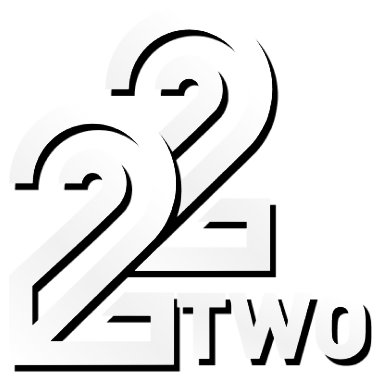Before I discovered the world of “mines” games online, I found myself in a rut with my usual gaming routines. My evenings would blur together while playing the same repetitive slots and card games—enjoyable at first, but eventually predictable. I remember one particular night, after a long stretch of lackluster rounds, feeling stuck and honestly a bit bored. That’s when a friend mentioned the “mines” game to me, suggesting it might break the monotony. I was skeptical at first, not quite understanding how a simple grid of hidden mines could provide the thrill I was looking for. Yet, curiosity got the better of me, and I decided to give it a try. Little did I know that this decision would not only reignite my enthusiasm for online gaming but also introduce me to a new layer of strategy and excitement I hadn’t experienced before.
What is mines?
The first question that popped into my mind was, “What exactly is mines?” My friend described it as a digital version of the classic Minesweeper, but with real stakes and the potential for actual prizes. The premise is deceptively simple: you’re presented with a grid—often 5×5 or larger—and you need to click on tiles one by one, trying to avoid the hidden mines. Each successful click reveals a safe spot and increases your potential winnings, but hitting a mine ends the round and you lose what you’ve accumulated in that session.
My initial introduction to mines happened on 22TWO, an online gaming platform I’d already trusted for years. Knowing that 22TWO was established in 2006 and had a solid reputation for trust and credibility put my mind at ease while I was learning this unfamiliar game. I appreciated that the platform operates under a Philippines gaming license issued by PAGCOR, which assured me that the game was not only legal but also ran with the highest standards of player protection and responsible gaming. This was especially important to me after hearing stories of unfair or unsafe gaming environments on less reputable sites. If I was going to try something new and potentially risky, I wanted to make sure I was doing so in a secure and regulated space.
At first, mines seemed almost too straightforward. I wondered if there was any real skill involved, or if it was just blind luck. However, after a few rounds, I realized how much strategy could be involved. The tension of deciding whether to cash out or risk another click on the grid added a whole new dimension to my gaming experience. Each decision felt meaningful, and the adrenaline rush was real. It was a refreshing change from the more automated feeling of spinning slots or drawing cards. I quickly learned that mines was about balancing risk and reward, trusting your gut, and accepting that sometimes, you’d lose—but sometimes, you’d win big.
How to play mines: My first steps and rookie mistakes
Curiosity pushed me to try my first game of mines. I started small, picking a modest bet and a conservative number of mines on the board. The rules were easy enough to grasp: choose your bet, select how many mines to hide, and start clicking the tiles. For each safe spot I revealed, my potential payout increased. It sounded easy, right? In reality, my beginner’s luck was mixed—I hit a mine on my third click. The disappointment stung, but it also made me realize that there was more to the game than just random chance.
My first major mistake was underestimating the psychological aspect. After a couple of early losses, I became hesitant, cashing out too soon and missing out on potential winnings. On the flip side, there were rounds where greed got the better of me, and I kept clicking even when I knew I should’ve stopped. I still remember one particular session: I’d revealed eight safe tiles in a row, and the payout had climbed impressively. My heart was pounding, and I debated cashing out. Instead, I went for one more tile—and that was it. Boom. Mine. Everything lost.
What really helped was reviewing my gameplay and learning from these miscalculations. I started setting mental rules for myself: a maximum number of safe spots before cashing out, never exceeding a certain bet amount, and taking breaks to avoid playing on tilt. The transparency of 22TWO’s platform made this easier. Their interface allowed me to track my play history and outcomes, which gave me a sense of control and accountability. It helped knowing that their tech team monitored the platform 24/7, ensuring fair play and security. This allowed me to focus on my strategy, not on worrying whether the game was rigged or my personal information at risk.
With time, my approach to mines became more measured. I realized that success wasn’t about making wild guesses, but about playing smart, managing risk, and, above all, enjoying the experience. If you’re new to mines, my advice is to start small, take your time learning the game’s rhythm, and don’t let early losses discourage you. Mistakes are inevitable, but each one is a lesson that can make you a stronger player.
What unexpected challenges come with playing mines?
I soon discovered that mines isn’t just a test of luck and strategy—it’s also a test of patience and self-control. One unexpected challenge was managing my emotions. Winning streaks can feel exhilarating, but losing streaks are equally intense. There was a period when I found myself chasing losses, convinced that my luck would turn any moment. This, of course, rarely worked out in my favor. It’s easy to get swept up in the excitement and lose track of time or budget, especially with such an engaging and fast-paced game.
Another issue I encountered was decision fatigue. After several sessions, I realized I was making poor choices simply because I was tired. Mines is a game that rewards focus. If I played late at night or after a long day, I’d find myself clicking impulsively, ignoring the cautious approach that had brought me success earlier. To overcome this, I implemented short sessions and scheduled breaks. It made a noticeable difference in my outcomes and enjoyment.
On the technical side, I never faced any security scares or glitches on 22TWO, which is a testament to their robust security measures and constant monitoring. I did, however, run into issues on another lesser-known platform once, where a technical hiccup caused my game to freeze mid-round. It was a frustrating experience and highlighted for me just how important it is to choose a platform that prioritizes not just entertainment, but also player protection and data security. Returning to 22TWO afterward felt like a relief, knowing that the integrity of my games and my personal data were being looked after by a team working around the clock.
I would recommend mines to anyone who enjoys games that mix strategy, risk, and excitement. It’s a great fit for players who like to be in control of their fate and who appreciate a game that’s easy to pick up but hard to master. However, I wouldn’t suggest it to anyone who struggles with self-control or who finds it difficult to walk away after a loss. The game’s fast pace and high stakes can be a double-edged sword if you’re not mindful of your limits. As always, responsible gaming is essential.
Who benefits most from playing mines, and who should avoid it?
After months of playing, I’ve noticed that mines appeals to a certain type of player. If you enjoy calculated risks, quick decision-making, and games that reward both nerve and patience, mines is definitely worth trying. It’s also great for those who want a break from traditional casino games and are looking for something that combines simplicity with adrenaline-pumping suspense.
One of my friends—a self-professed math geek—found mines addictive in the best way. He’d devise complex strategies to maximize his odds and would meticulously track his results. For him, the challenge was as much intellectual as it was financial. On the flip side, I have another friend who prefers the slower pace and predictability of games like blackjack. She tried mines once and found the tension a bit overwhelming. She told me she preferred knowing the odds and outcomes in advance, rather than risking it all on one more click.
Because mines is so accessible and easy to understand, it’s also appealing to newcomers to online gaming. The interface on 22TWO made it especially inviting: clear instructions, easy navigation, and a level of transparency that instilled confidence. Their ongoing commitment to responsible gaming and player support—backed by their regulatory license and around-the-clock technical oversight—means that I never felt like I was gambling in the dark. It’s reassuring to know that if anything goes wrong, help is just a click away.
However, I wouldn’t recommend mines to anyone who is easily frustrated by loss or who isn’t willing to accept the inherent risks. The temptation to chase after losses can be strong, and without self-discipline, it’s easy to fall into bad habits. If you’re someone who prefers slow, methodical games, or if you find high-pressure situations stressful, mines might not be the best fit. But for those who thrive on excitement and calculated risk, it’s one of the most engaging options out there.
In the end, mines offered me exactly what I was looking for: a new challenge, a fresh sense of excitement, and an opportunity to sharpen my decision-making skills. If you’re curious and up for the thrill, I’d encourage you to give it a try—but do so responsibly, and always on a trusted platform.
Have you tried playing mines? What were your experiences, good or bad? I’d love to hear your stories or answer any questions you might have. Feel free to comment below, save this post for later, or share it with friends who might enjoy the game!




